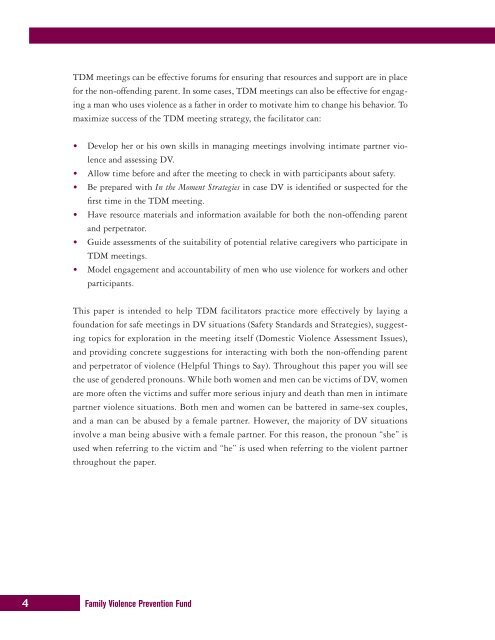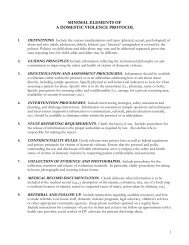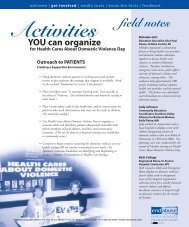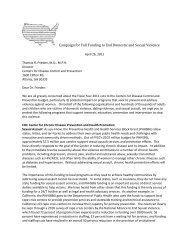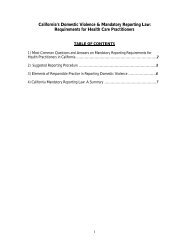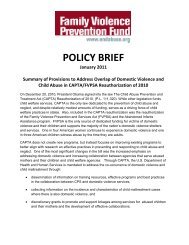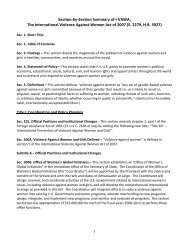Team Decisionmaking and Domestic Violence: Guidelines for ...
Team Decisionmaking and Domestic Violence: Guidelines for ...
Team Decisionmaking and Domestic Violence: Guidelines for ...
Create successful ePaper yourself
Turn your PDF publications into a flip-book with our unique Google optimized e-Paper software.
TDM meetings can be effective <strong>for</strong>ums <strong>for</strong> ensuring that resources <strong>and</strong> support are in place<br />
<strong>for</strong> the non-offending parent. In some cases, TDM meetings can also be effective <strong>for</strong> engaging<br />
a man who uses violence as a father in order to motivate him to change his behavior. To<br />
maximize success of the TDM meeting strategy, the facilitator can:<br />
• Develop her or his own skills in managing meetings involving intimate partner violence<br />
<strong>and</strong> assessing DV.<br />
• Allow time be<strong>for</strong>e <strong>and</strong> after the meeting to check in with participants about safety.<br />
• Be prepared with In the Moment Strategies in case DV is identified or suspected <strong>for</strong> the<br />
first time in the TDM meeting.<br />
• Have resource materials <strong>and</strong> in<strong>for</strong>mation available <strong>for</strong> both the non-offending parent<br />
<strong>and</strong> perpetrator.<br />
• Guide assessments of the suitability of potential relative caregivers who participate in<br />
TDM meetings.<br />
• Model engagement <strong>and</strong> accountability of men who use violence <strong>for</strong> workers <strong>and</strong> other<br />
participants.<br />
This paper is intended to help TDM facilitators practice more effectively by laying a<br />
foundation <strong>for</strong> safe meetings in DV situations (Safety St<strong>and</strong>ards <strong>and</strong> Strategies), suggesting<br />
topics <strong>for</strong> exploration in the meeting itself (<strong>Domestic</strong> <strong>Violence</strong> Assessment Issues),<br />
<strong>and</strong> providing concrete suggestions <strong>for</strong> interacting with both the non-offending parent<br />
<strong>and</strong> perpetrator of violence (Helpful Things to Say). Throughout this paper you will see<br />
the use of gendered pronouns. While both women <strong>and</strong> men can be victims of DV, women<br />
are more often the victims <strong>and</strong> suffer more serious injury <strong>and</strong> death than men in intimate<br />
partner violence situations. Both men <strong>and</strong> women can be battered in same-sex couples,<br />
<strong>and</strong> a man can be abused by a female partner. However, the majority of DV situations<br />
involve a man being abusive with a female partner. For this reason, the pronoun “she” is<br />
used when referring to the victim <strong>and</strong> “he” is used when referring to the violent partner<br />
throughout the paper.<br />
4 Family <strong>Violence</strong> Prevention Fund


